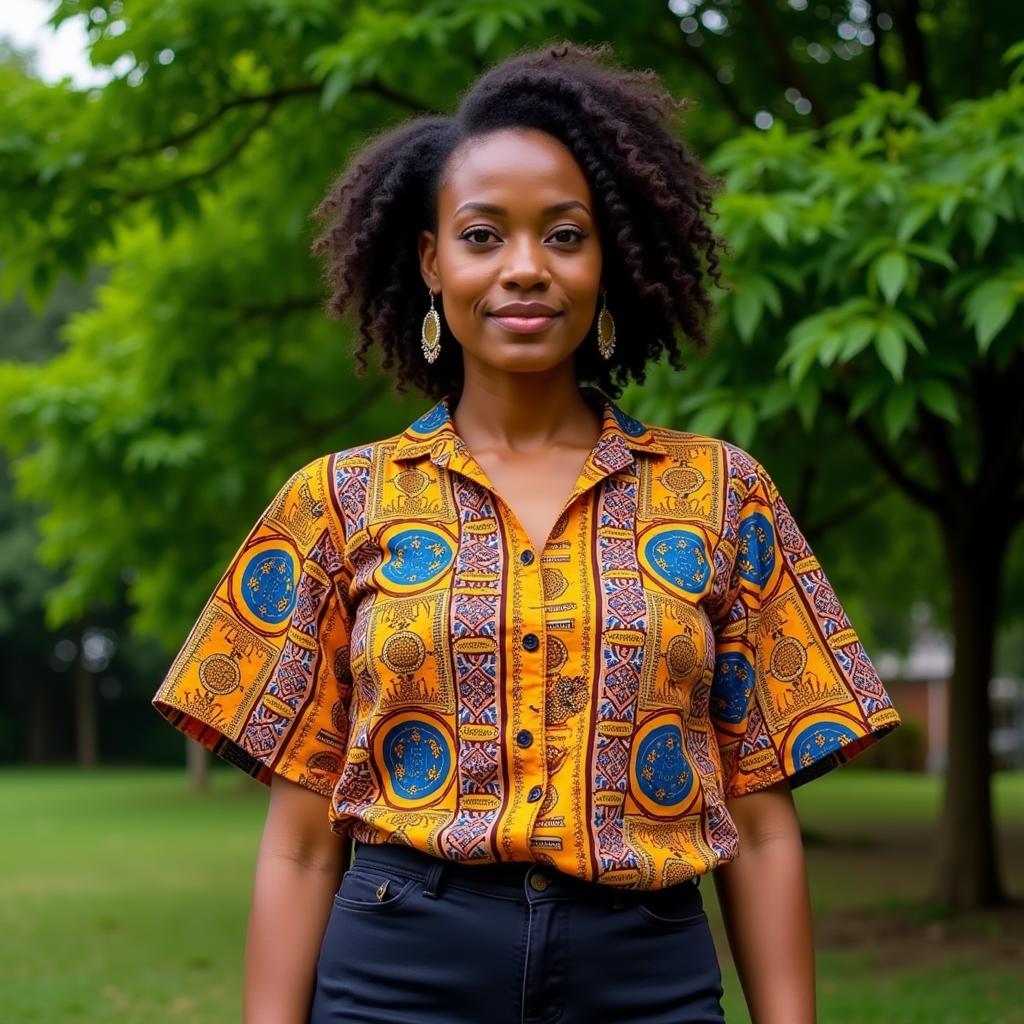Unveiling the Art of African Braided Horns
African Braided Horns, a captivating blend of artistry and cultural significance, represent more than just decorative objects. They embody a rich tapestry of traditions, beliefs, and practices across various African communities. From ceremonial adornments to symbols of power and status, these intricately crafted horns hold a unique place in the heart of African heritage.
What exactly are African braided horns, and what makes them so special? These horns, typically from cattle, antelope, or other horned animals, are meticulously cleaned, hollowed, and often shaped before being adorned with intricate braiding. This process, passed down through generations, involves weaving various materials, such as leather, plant fibers, or even metal wire, around the horn to create stunning patterns and textures. The choice of materials and braiding styles often reflects specific cultural or regional identities. For instance, some communities might incorporate beads, shells, or feathers into the braiding, adding another layer of symbolism and aesthetic appeal.
The Significance of African Braided Horns in Different Cultures
African braided horns play diverse roles across the continent, reflecting the unique customs and beliefs of each community. In some cultures, they serve as ceremonial instruments, producing resonant sounds that accompany rituals, dances, and celebrations. The african goddess of dance is often depicted with instruments similar to these. In others, they are symbols of power and authority, carried by chiefs, warriors, or spiritual leaders. The horns can represent strength, courage, and connection to the ancestral world.
Horns as Symbols of Power and Status
The size and elaborate decoration of a horn can often indicate the status of its owner. A large horn with complex braiding might signify a high-ranking individual within the community. The materials used in the braiding can also hold significance. For example, horns braided with rare or precious materials could symbolize wealth and prestige.
Among certain pastoralist communities, the horns themselves are valued possessions, and the braiding further enhances their worth. The horns are not merely decorative items but are deeply intertwined with social and economic structures.
Horns as Musical Instruments
In many African cultures, braided horns are integral to musical traditions. They are used to create a variety of sounds, from deep, resonant tones to high-pitched calls. The shape and size of the horn, as well as the materials used in its construction, contribute to its unique sonic qualities. These instruments play a vital role in ceremonies, festivals, and other communal gatherings, adding a rich layer of sound to the cultural tapestry.
Crafting African Braided Horns: A Testament to Artistry and Skill
The creation of African braided horns is a testament to the artistic skill and cultural knowledge passed down through generations. It’s a meticulous process requiring patience, precision, and a deep understanding of traditional techniques. The preparation of the horn itself is a crucial step. It involves cleaning, hollowing, and sometimes shaping the horn to achieve the desired form. Then comes the intricate braiding, which can take hours, days, or even weeks to complete, depending on the complexity of the design.
Preserving the Legacy of African Braided Horns
Today, African braided horns continue to be cherished as both artistic expressions and cultural symbols. Efforts are underway to preserve the traditional crafting techniques and ensure that this rich heritage continues to thrive. By supporting these artisans and appreciating their work, we can contribute to the preservation of this unique aspect of African culture.
Conclusion: Appreciating the Beauty and Significance of African Braided Horns
African braided horns offer a glimpse into the rich cultural heritage of the continent. From their symbolic meaning to their artistic craftsmanship, these horns represent a tangible link to ancient traditions and beliefs. By understanding their diverse roles and appreciating their intricate beauty, we can gain a deeper appreciation for the cultural tapestry of Africa. Let’s continue to explore and celebrate the artistry and significance of African braided horns, ensuring their legacy endures for generations to come.
FAQ
- What are African braided horns made of? Typically, they are made from the horns of cattle, antelope, or other horned animals, and decorated with leather, plant fibers, or metal wire.
- What is the significance of African braided horns? They serve as ceremonial instruments, symbols of power, and artistic expressions.
- How are African braided horns made? The horns are cleaned, hollowed, shaped, and then intricately braided with various materials.
- Where can I find authentic African braided horns? Contact us to connect with reputable artisans and vendors.
- Are African braided horns still used today? Yes, they continue to be used in ceremonies, rituals, and as decorative items.
- What is the cultural significance of the braiding patterns? The patterns often reflect specific cultural or regional identities.
- How can I support the artisans who create these horns? Purchase authentic pieces and help spread awareness of their craft.
When you need support please contact Phone Number: +255768904061, Email: kaka.mag@gmail.com Or come to the address: Mbarali DC Mawindi, Kangaga, Tanzania. We have a 24/7 customer care team.



